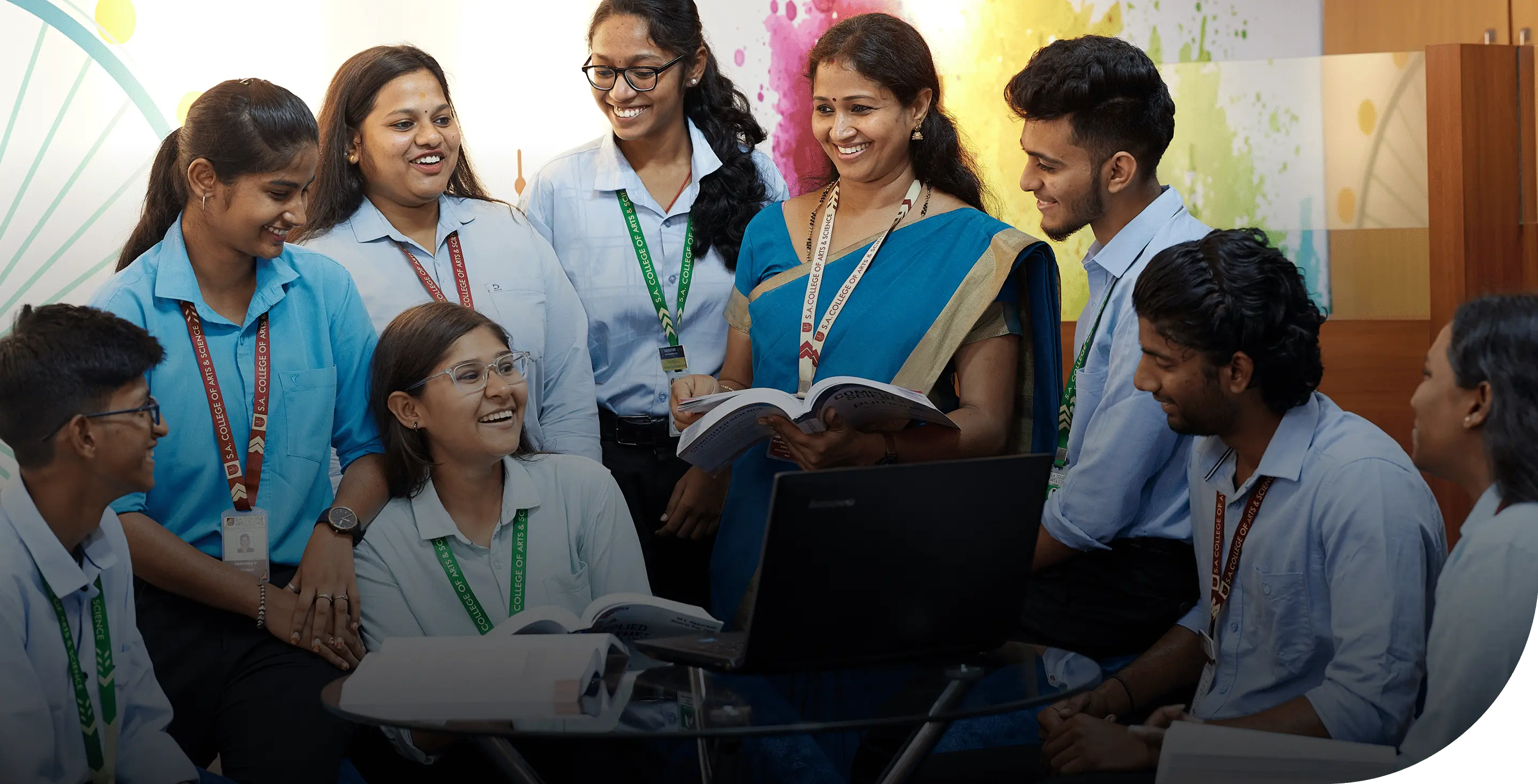
SACAS Events
Get all important updates, notices, and announcements in one place. Stay informed about events, academic schedules, deadlines, and other essential information to ensure you never miss out.
Department of Visual Communication at S.A. College of Arts and Science organized an insightful guest lecture on 16.09.2024
September 17, 2024
Department of Visual Communication at S.A. College of Arts and Science organized an insightful guest lecture featuring Mr. Ashwin Prasath, Senior Principal Photographer at The New Indian Express. The session began at 10 AM with the traditional lighting of the lamp, symbolizing the dispelling of darkness through knowledge and wisdom. Faculty members, more than 200 students including other college students, and other dignitaries were present to witness the event. Mr. Ashwin Prasath is a well-known figure in the field of photojournalism with years of experience covering significant events across Tamilnadu. His extensive career has seen him capture moments that not only inform but also move society. He shared valuable insights from his professional journey, focusing particularly on the ethics and challenges of photojournalism.
The Role and Ethics of a Photojournalist During his lecture, Mr. Prasath stressed the importance of a photojournalist’s role in serving society. He believes that the primary responsibility of a photojournalist is to present news as it is without embellishment or manipulation. His motto, “News is news; there is no need to change it. Show it as it is,” resonated with the audience. According to him, photojournalists must
remain true to the events they capture and avoid distorting reality. He discussed the ethical responsibility that comes with wielding a camera, particularly the need to honestly document events as they unfold, without interference or staged shots. In an era where the lines between reality and manipulation are often blurred, Mr. Prasath emphasized that photojournalists should strive to remain credible and unbiased, showcasing real stories through their lens. The Practical Challenges of Photojournalism One of the key points Mr. Prasath raised was the importance of knowing the geographical terrain of one’s working environment. He advised aspiring photojournalists to familiarize themselves with the city they cover, particularly its various routes and locations. In fast-paced news scenarios, where every second counts, this knowledge could be a lifesaver.
Mr. Prasath also touched upon the challenging conditions under which photojournalists often work. Whether it’s covering protests, natural disasters, or conflict zones, a photojournalist must be prepared to face unpredictable and often dangerous situations. He explained that capturing the perfect image often requires immense patience, quick reflexes, and a deep understanding of the visual narrative.
Photojournalism vs. Post-Production
In a thought-provoking discussion, Mr. Prasath expressed his skepticism towards post- production work in photojournalism. While post-production tools such as Photoshop are widely used in the industry, he believes that they should be used sparingly, if at all, in the context of journalism. “A photojournalist’s job is to capture reality, not to create it,” he said, emphasizing that excessive editing undermines the authenticity of the story being told. Storytelling through Photographs One of the highlights of the session was Mr. Prasath showcasing some of his best photographs. These images, capturing a wide range of emotions and situations, served as powerful examples of how photographs can tell stories without the need for words. He explained to the students the significance of visual storytelling, illustrating how a well-timed and thoughtful photograph can communicate complex narratives in ways that text often cannot. To further illustrate this point, Mr. Prasath shared images taken by Danish Siddiqui, the renowned Indian photojournalist who tragically lost his life while on assignment in Afghanistan in 2021. Siddiqui’s work, particularly his coverage of the Rohingya refugee crisis and the COVID-19 pandemic in India, serves as a benchmark for impactful photojournalism. Mr. Prasath explained how Siddiqui’s ability to visualize the story before even clicking the shutter made his photographs not just visually stunning but also deeply evocative. Siddiqui’s death was a somber reminder of the dangers that photojournalists face while documenting the truth.
Conclusion
Mr. Ashwin Prasath’s lecture was a profound learning experience for the students, offering them a glimpse into the reality of life as a photojournalist. His emphasis on ethics, the importance of geographical knowledge, and the challenges faced in the field provided invaluable insights for those aspiring to enter this dynamic profession. By showcasing his own work and that of Danish Siddiqui, Mr. Prasath inspired students to think beyond the lens and understand the deeper narrative they are capturing.
The session concluded with an interactive Q&A, during which students eagerly asked questions about the nuances of photojournalism, the role of technology, and the ethical dilemmas faced in the profession. Mr. Prasath’s words of wisdom and his practical advice will undoubtedly leave a lasting impact on the budding photojournalists in attendance.





